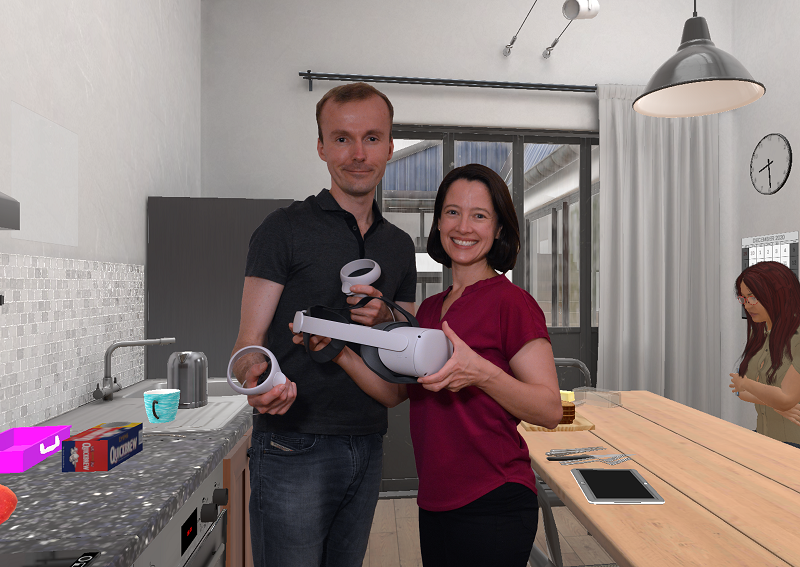
Flinders Caring Futures Institute research examining the use of virtual reality headsets in rehabilitation settings has shown the technology presents exciting opportunities for the future of healthcare.
A pilot study led by researcher Associate Professor Belinda Lange has investigated whether the technology could be an effective tool for people recovering from brain injury.
“People with brain injury can be impacted in many ways,” A/Prof Lange explains. “We know that people’s memory is often challenged, so they might not remember where they put things or how to do everyday tasks.”
Brain injury can also have a substantial impact on movement, with many people having difficulty picking up and moving objects. Rehabilitation traditionally takes the form of breaking down tasks into small pieces to help the person with brain injury slowly regain their independence.
“A range of different strategies can be used, often involving face to face activities with clinicians as well as the formulation of tasks to practice in the home environment,” A/Prof Lange says, adding rehabilitation is critical to positive wellbeing and a return to normal life.
“We asked ourselves, what are some aspects of rehabilitation that we have difficulty with currently, and how can we leverage what technology offers to support that?”
With extensive experience in the use of virtual reality devices and their application in healthcare settings, A/Prof Lange led a project observing how people complete everyday tasks by using virtual reality compared to how they complete them in real life. The study used Meta Quest2 virtual reality headsets, providing participants with an interactive and immersive view of the environment around them.
In partnership with Katana Simulations, who developed the virtual kitchen, the team worked with clinicians to set up a virtual and real-world kitchen. People with and without brain injury were recruited to take part in the study.

“In both of the environments, we got them to make a cup of tea and a Vegemite sandwich,” A/Prof Lange says. “We wanted to test the participants with fairly basic tasks that anyone would be doing, that required a few steps, and see whether using a virtual kitchen made people make mistakes or if they did things in a different way.”
The research team recorded the time taken for the participants to complete each task, the order in which each step was carried out, and if the participants needed prompts at any stage of the process. The findings were conclusive.
“We found very few differences between the real and virtual environments,” A/Prof Lange explains. “Those that made errors, made them in both environments. Most participants did the tasks in a similar way throughout the study.”
The research team looked at system usability to gather people’s impressions of using the technology. In support of using virtual reality devices in brain injury rehab, the feedback was positive, and most people did not experience any side effects.
“All participants said they would use the system again,” A/Prof Lange says. “We had one participant who wanted to go out and buy one of the headsets to use in other ways!
“In using virtual reality for rehab, we have something that looks like a real environment that people can practice in, in a safe way. It’s okay to make mistakes and it’s okay to play a little bit too.
“We’re still in the early stages of exploring how we can use the technology more broadly, in collaboration with clinicians, so we expect to be using the technology in other scenarios as well, like for gardening or in a virtual supermarket.”
However, A/Prof Lange is quick to emphasise the fact virtual reality will not be the go-to solution in all circumstances.
“It’s not going to be the magic bullet. I think it is just another tool in the clinician’s toolkit and that’s important to focus on.”

